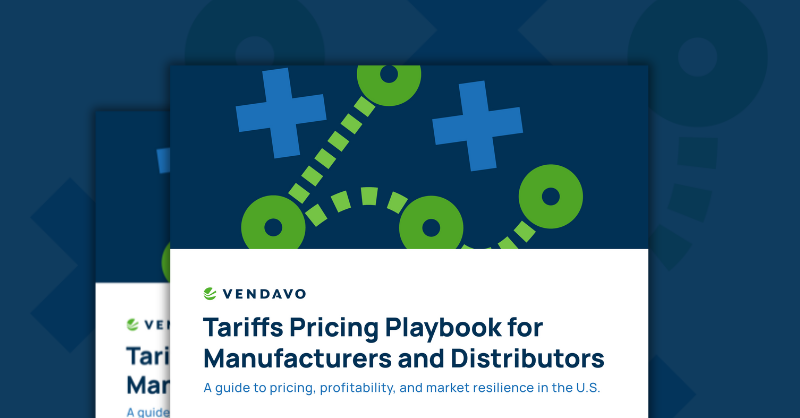What is Rebate Management?
Rebate management is the strategic and collaborative process of documenting contracts with suppliers, monitoring sales activity within those agreements, and handling accruals and rebate claims in a timely fashion. It’s a financial control mechanism companies harness to incentivize sales while maintaining profitability.
This coordinated system manages complex deal structures by automating calculations and ensuring compliance across various industries. Effective rebate management balances incentive offerings against business objectives, fostering strong customer relationships and driving performance through clear, measurable rewards.
The Benefits of Rebate Management
A comprehensive rebate management system offers a multitude of advantages that streamline operations and enhance strategic decision-making. Here’s an integrated view:
- Streamlined processes: It simplifies the entire rebate lifecycle, from agreement creation to final settlement, making it more efficient through automation.
- Improved collaboration: A unified platform facilitates better communication between internal teams and external partners by providing a single source of truth.
- Deal visibility: Complete transparency into deals allows for informed decision-making and agile responses to market changes.
- Enhanced reporting and forecasting: Accurate data capture improves reporting capabilities, leading to more precise forecasting and trend analysis.
- Real-time data access: Instant access to current information enables swift, well-informed business decisions on the fly.
- Optimized deal performance and productivity: By automating routine tasks, teams can redirect their focus toward strategic activities that improve deal outcomes while boosting overall productivity.
- Increased profitability: Efficiently managing rebates ensures minimal time spent per transaction which in turn boosts revenue growth and profit margins.
- Compliance maintenance: Automated tracking aids in maintaining regulatory compliance with ease, reducing risk during audits.
Combining these benefits leads not only to improved operational efficiency but also contributes significantly towards nurturing customer loyalty by ensuring they experience no friction when participating in rebate programs.
Why Managing Rebates is a Challenge
The task of managing rebates comes with its own set of unique challenges. Below are some difficulties businesses often face and how an automated system can address these issues:
- Complexity in tracking: Rebate agreements can be intricate, with varying conditions and tiers. Manual tracking is prone to errors, making it hard to uphold the terms accurately.
- Volume of data: As business scales up, so does the volume of transactions that need monitoring for rebates—which can be overwhelming when relying on manual processes.
- Time consumption: Calculating rebates manually requires significant time investment which could otherwise be spent on strategic initiatives.
- Lack of real-time insights: With traditional methods, it’s challenging to get timely insights into rebate performance metrics which are essential for quick decision-making.
An automated rebate management system streamlines these complexities by offering features like real-time data processing and accurate transactional records. The transition from manual to digital not only overcomes the inherent challenges but also elevates efficiency and profitability through advanced analytics capabilities.
Challenges of Manual Processes for Rebate Management
Manual rebate management is fraught with obstacles that can drain a business’s resources and stifle its potential. The painstaking effort to collect and report data accurately, the sluggish pace of payment processing, and the absence of efficiency due to lack of automation are just some hurdles companies face. In fact, 51% of CFOs and General Managers use manual processes or in-house applications to manage rebates which, not only drains resources and inhibits the benefits of effective channel management but also introduces significant risks for errors, potentially harming business relationships.
Accurate Data Collection and Reporting
The foundation of successful rebate management lies in the integrity and precision of data collection and reporting. Manually gathering customer information is not only labor-intensive but also prone to inaccuracies that can skew trend analysis and regulatory compliance efforts.
Financial automation tools revolutionize this aspect by streamlining data aggregation, ensuring every piece of customer data is meticulously captured for accurate reporting. By harnessing these technologies, businesses can accelerate their report generation processes—reducing errors significantly—and comply with regulations more effortlessly while gaining valuable insights into consumer behavior patterns essential for strategic planning.
Delay in Payment Processing and Claiming
Delays in processing rebate payments can create a domino effect of issues, souring customer relationships and potentially eroding loyalty. When customers don’t receive their rebates promptly, trust wanes, leading to dissatisfaction that can spread through word-of-mouth or online reviews. This is where the features of rebate management software become invaluable.
With automated payment processing capabilities, these systems minimize delays by ensuring that claims are verified and processed swiftly—improving accuracy while reducing the time between claim submission and payout. By implementing such solutions, companies demonstrate respect for their clients‘ time and investment, which is essential for nurturing ongoing business partnerships. Rebate management software becomes not just a tool for operational efficiency but also an instrument for maintaining high levels of customer satisfaction.
Lack of Automation and Efficiency
In the world of rebate management, embracing automation is key to boosting efficiency and reducing the heavy lifting that comes with administrative overhead. Without it, companies are left sifting through loads of data, often with ambiguous standards and processes. That’s where costly mistakes creep in, hitting both the organization’s reputation and bottom line.
Robotic process automation (RPA) serves as a game-changer by taking over repetitive tasks involved in calculating rebates earned and payments due. This technology not only speeds up operations but also ensures consistency across all transactions—fostering an atmosphere where precision is paramount. With RPA integrated into rebate management strategies, companies are better equipped to handle complex deal structures while cutting down on costs associated with manual handling—an undeniable boon for any business looking to stay competitive in today’s market.
Solutions to Address Manual Processes for Rebate Management
To address the inefficiencies of manual rebate management processes, adopting automated software and database solutions is essential for achieving streamlined systems. These powerful tools are designed to replace cumbersome paper-based processes with faster, error-resistant digital workflows. They enable businesses to manage complex rebate programs effectively while ensuring better accuracy and regulatory compliance.
Automated Software Systems
The level of utility and rebate optimization that automated software systems provide is revolutionizing the way manufacturers and high-tech companies manage their programs. With the help of such advanced solutions that streamline every aspect of the rebate management process, these automated platforms overcome common challenges like the intricacies of handling intensive data analysis and the high stakes demands that come with strict compliance standards.
The benefits of automated rebate management software deliver high ROI, especially for large organizations that deal with vast data sets. Automated tracking delivers real-time insights, giving businesses a stronger handle on their strategic rebate initiatives. With these tools, organizations can monitor rebate program performance, make informed adjustments instantly, and forecast future outcomes with greater precision.
For implementation within data-heavy industries:
- Begin with an internal assessment and awareness to underscore the importance of adopting a more efficient rebate management system.
- Evaluate current processes to identify areas where automation can have the greatest impact.
- Choose a reputable automated system tailored to your industry’s specific needs.
- Train relevant teams on how to use this new technology effectively for maximum benefit.
With the right approach, companies set themselves up for a more optimized system for managing rebates, which can result in improved operational efficiency and better strategic decision-making capabilities.
Comprehensive Database Solutions
Comprehensive database solutions are integral to modernizing rebate management. These cloud-based products provide frictionless integration with various enterprise platforms, establishing a centralized hub for managing rebates, enhancing pricing strategies, and leveraging customer data insights.
For marketers, the advantages of such database solutions are powerful. They lead to more creative and targeted promotional strategies by tapping into rich data sets that reveal customer preferences and loyalty patterns. With access to these insights, marketing strategies can be precisely tailored to meet consumer needs, effectively boosting engagement and nurturing lasting brand loyalty through well-executed promotional activities.
Benefits of using Rebate Management Solutions
Rebate management solutions offer a myriad of benefits that can transform the way businesses approach rebates and incentives. These systems improve accuracy, simplify complex rebate calculations, and provide invaluable access to detailed customer data. By leveraging such technology, companies not only enhance operational efficiency but also gain strategic insights—enabling smarter decision-making and encouraging stronger customer relationships through personalized offers.
Improves Accuracy
Rebate management software significantly enhances accuracy by automating the complex process of rebate calculations. This automation removes the risk of human error, which is a common pitfall in manual processes. The software provides end-to-end visibility, ensuring that each step—from initial agreement to final payout—is tracked and accurately recorded.
Advanced features like automatic calculation utilize customer data to determine precise rebate amounts instantly. Rebate automation not only ensures pinpoint accuracy in refunds but also reduces the likelihood of disputes or revenue leaks—two issues that can arise from miscalculations. With these robust tools at their disposal, businesses are equipped to manage rebates with confidence and integrity.
Simplifies Rebate Calculations
Rebate management software streamlines the complexity of managing large-scale rebate programs. It adeptly handles multifaceted scenarios, including multiple tiers and a variety of products or categories, with ease. The intricacies of such calculations are simplified through sophisticated algorithms that automatically adjust to the specifics of each deal based on price margins and customer preferences.
By implementing this technology, businesses can reduce their reliance on extensive staff resources traditionally needed for these tasks. This reduction in manual labor leads to substantial cost savings while allowing team members to focus on more strategic initiatives rather than getting
bogged down by time-intensive calculations.
Access to Customer Data
Rebate management software is a game-changer when it comes to understanding your customers. It dishes out analytics and reports in real-time, so you can get the lowdown on what’s hot and not in buying behaviors. This kind of quick access lets businesses see exactly how their rebate offers are playing out—what pulls people in and what might be missing the mark.
Seeing all this customer data helps companies tailor promotions that hit just right with certain groups or interests. Plus, keeping an eye on who’s coming back for more gets easier, thanks to patterns that pop up over time from all that info gathered. With these insights at hand, rewarding loyalty and building lasting bonds with top-tier customers becomes part of the everyday flow.
Why is Rebate Management Software Necessary?
The investment in rebate management software offers an essential tool for any organization that wants to mitigate the dynamic challenges of manual rebate processes. It automates the entire rebate lifecycle, from initiation through fulfillment, creating a seamless bridge between businesses and their customers. This automation helps streamline operations and optimizes for accuracy and timeliness—key factors in ensuring customer satisfaction.
The software’s advanced analysis tools offer valuable forecasts that guide the creation of optimal rebate agreements tailored to both business goals and market dynamics. Stakeholders across various departments—from finance to sales—benefit from these insights as they can make informed decisions based on comprehensive data analytics.
Ultimately, implementing such a system safeguards against common pitfalls associated with traditional methods while promoting a positive experience for customers—a win-win scenario crucial for sustained success in today’s competitive landscape.
People Also Ask
Rebate management often sparks a variety of questions for those looking to enhance their understanding and execution of these financial strategies. From identifying the key components in rebate processes to unraveling how rebates are handled, there is a wealth of knowledge to uncover.
Who uses rebate management?
Retailers, manufacturers, distributors, and wholesalers all turn to rebate management software to keep their incentive programs running smoothly. Retail shops use it to make sure promos hit the mark. Manufacturers line up rebates with how much they produce. Middlemen sharpen deals along the supply chain and bulk sellers manage discounts on big orders without a hitch.
Inside these businesses, different teams like sales or finance dig into features to help them do their jobs better. Think of dashboards that show data in real-time or tools that play nice with other software they’re using. All this helps them stay sharp and efficient when dealing with rebates. It’s the backbone for tracking what customers buy and being able to disseminate perks accordingly.
What is rebate processing?
Rebate processing is all about giving a financial incentive back to customers after they’ve bought something. It’s a win-win: companies boost sales and shoppers save some cash or get other perks. The process typically involves a customer applying for the rebate, the company verifying eligibility, and then issuing the appropriate refund.
Various forms of rebates exist, including cashback offers, gift card incentives, or discounts on subsequent purchases. Each type follows essential steps: submission of a customer application for the rebate; thorough verification by the company to confirm purchase compliance; and finally, payment issuance that completes the cycle of customer reimbursement.



